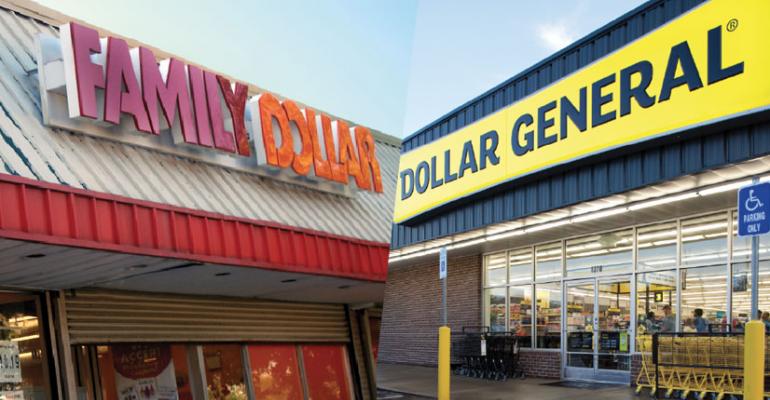With an entire coast still to populate, and stores meeting a growing shopper demand for value and convenience, there’s still plenty of opportunity for the dollar store channel to grow.
But that hasn’t tempered speculation over what’s next for this rapidly changing channel. Concerns over rising costs of real estate, new competition, effects of an improving economy and eventually an end to so-called “white spaces” on the map increasingly accompany a story that’s otherwise been all about new store doors and the opportunity to serve a wider customer base.
And this uncertainty in turn has fueled interest among some observers that the nation’s leading dollar stores should look not to the map but to one another as their next big opportunity. Though it is unclear whether Dollar General and longtime rival Family Dollar have the appetite for a merger, investor interest is there, observers note, pointing out potential advantages including reduced costs, greater scale and the potential to become much more than a “nuisance” as a competitor.
“The merger of Dollar General and Family Dollar would create the largest small-box retailer in the U.S. and the ‘champion’ for the fill-in trip at affordable prices,” Edward Kelly, an analyst for Credit Suisse, wrote in a research report examining the potential combination, published earlier this month. “It leverages the migration of the U.S. consumer to value and needs-based shopping in staples, which is fueled by the struggles of the lower-income consumer and aging population. The combined company’s scale, market presence and store growth would represent a large threat to less convenient, larger box staples players like discounters and supermarkets, as well as higher priced convenience operators like drugstores.”

California Dreaming
For the moment, dollar stores Dollar General, based in Goodlettsville, Tenn., and Family Dollar, Matthews, N.C., are separately pursuing aggressive plans to populate the West Coast with new stores. Dollar General plans 650 new stores overall this year, while Family Dollar has 500 on the board. (Dollar Tree, though often considered a member of the same class of trade as Family Dollar and Dollar General, has a vastly different format stemming from its single-price-point policy. Dollar Tree’s Deals subsidiary provides a more similar of the Dollar General and Family Dollar formats but currently operates just 194 stores mostly in urban markets. Dollar Tree plans 340 new stores in the U.S. and Canada this year).
These dollar store retailers are taking a very different vehicle to California than the ones they developed in their respective Southeast birthplaces. Both retailers have made a sharp shift to a mix heavy with consumables including food, allowing them to position themselves as convenient alternatives to larger discounters, supermarkets and drug stores. This move has pressured margins for both players, but also resulted in higher sales volumes, and greater share of those trip-driving categories, dollar store officials said.
Dollar General is also using the West Coast to further test its DG Market, a 16,000-square-foot fresh grocery concept, and Dollar General Plus, a 10,000-square-foot version of its typical offering with more room for frozen and refrigerated foods (see sidebar).
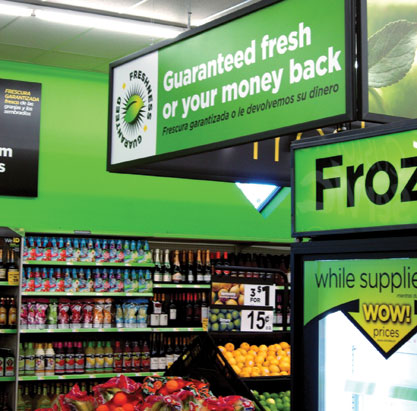
Most recently, Family Dollar and Dollar General have been rolling out cigarettes to their stores. This has become a powerful attraction for some shoppers, but is also coming at a cost to profitability.
Richard Dreiling, chief executive officer of Dollar General, last month in an investor conference described the evolution of the dollar channel from haphazard variety outlets for bargain hunters to curated selections of necessities for shoppers who cannot afford alternatives — and for those who can.
“Five years ago, if I was truthful with everybody in this room, we sold short-dated merchandise, outdated merchandise, didn’t-know-where-it-came-from merchandise, and the offering was incredibly eclectic from store to store,” Dreiling said. “Now what you have is a standardized offering that has a commitment to national brands and a national-brand equivalent private-brand program.
“So while we still appeal to that core demographic of [shoppers who earn] $50,000 or less per year, there is a another demographic, a higher demographic, that’s trading down and is suddenly realizing this isn’t the dollar store that I remember from five or six years ago.”
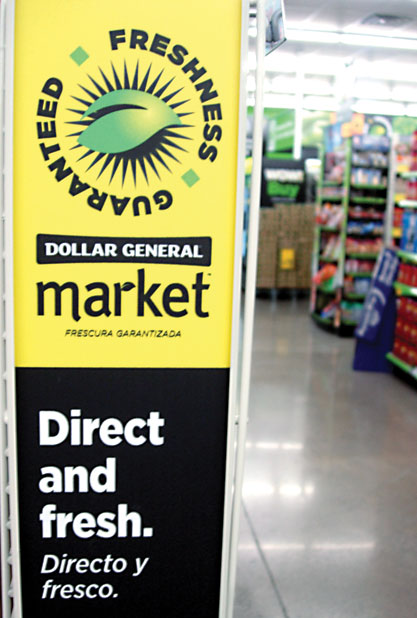 Family Dollar is evolving its stores even more abruptly than its rival, transforming hundreds of stores each year to a new format meant to provide a warmer shopping experience, offer significantly larger selections of food and consumables, and showcase a new layout facilitating the consumable shopping experience. Its case for the change is a simple matter of capturing more of its core shoppers’ trips, Michael Bloom, Family Dollar’s president and chief operating officer, explained in an investor conference.
Family Dollar is evolving its stores even more abruptly than its rival, transforming hundreds of stores each year to a new format meant to provide a warmer shopping experience, offer significantly larger selections of food and consumables, and showcase a new layout facilitating the consumable shopping experience. Its case for the change is a simple matter of capturing more of its core shoppers’ trips, Michael Bloom, Family Dollar’s president and chief operating officer, explained in an investor conference.
According to Bloom, Family Dollar was capturing only about $84 of the $6,000 its typical shoppers spend each year, and just six of their 183 shopping trips a year. Improving those figures, Bloom argued, required initiatives around their shoppers’ most common trip drivers — food, household chemicals and paper, health and beauty care, and tobacco. “The majority of our customers’ trips for these businesses are currently not made in our stores,” Bloom said in that presentation.
Family Dollar stores are evolving inside and out to meet the challenge, transforming from a retailer whose stores at one time were driven by sales of closeout merchandise and bargain apparel to one deriving 69% of its total sales from consumables. The rebranding initiative was completed at 2,600 stores last year and planned for another 850 stores this year. Those stores are seeing the number of food SKUs increase by 20% and health and beauty products increase by 25%, the company said.
Top 75 Listing: Family Dollar Ranks No. 24
In the meantime, Family Dollar accelerated new store growth in 2012, including locating in freestanding buildings and expanding to California for the first time. It operated 44 stores there by the end of its fiscal year last fall. Overall, Family Dollar officials said they feel they can double the size of the 7,800-store chain over time.
The meeting of new shoppers in the Western states and the dollar stores’ new formats has been a positive one, according to Dave Marcotte, director of analytics and information management at Wipro Technologies.
Top 75 Listing: Dollar General Ranks No. 15
“California is a tremendous market that doesn’t have a preconceived notion that dollar stores are low end,” Marcotte told SN in an interview. “In California, Oregon, Washington and Arizona, discount is just some place people go shopping. It isn’t necessarily poor or rich. Everybody hits it. And what both companies [Dollar General and Family Dollar] have going for them is a general-store mentality and a convenience-focused operation, which I think is very powerful.
“There’s a challenge getting that message out because they are new to the market,” he added, “but people I know in Arizona who are walking into a Dollar General or a Family Dollar for the first time come away deeply impressed. They get it.”
Every Six Hours
For some observers, however, the rapid square footage growth in the dollar industry has become a concern, particularly as comps slow and profits erode. Charles Grom, an analyst at Sterne Agee, in a recent research note said current dollar store growth — roughly 7% square-footage per year — is likely too high relative to the opportunity.
“To put this into context,” Grom wrote, “the big three dollar store companies will add 1,400 new stores in total in the U.S. in 2013, which amounts to one every six hours. At this pace of development, we believe there may be risk of overdevelopment and market saturation. To that end, we believe the traditional players [Dollar General and Family Dollar] may have to modestly temper their growth plans at some point over the next couple of years.”
Scott Mushkin, an analyst at Wolfe Research, agreed, telling SN that he felt dollar stores should slow new-store growth, especially now that the improving economy is providing less tailwind from customers who are trading down and competition for new sites is causing costs to rise. Mushkin said he felt dollar stores could resume faster growth when the economy again sparked new shoppers as a result of trading down.
“I told Rick Dreiling that if I were running [Dollar General] I would slow my square footage growth right now, harvest as much cash as I can and at any sign of the next recession, put the pedal back to the metal,” Mushkin said. “I think there is a lot of ‘white space’ [but] I think there are times to grow really fast and times not to.”
Growing pains could be especially acute at Family Dollar, Mushkin added, citing rapidly increasing lease obligations and concerns over in-store execution and higher prices than competitors.
In Wolfe’s most recent price check held this month in Texas, Family Dollar was 9.7% more expensive than Wal-Mart and 8.2% more expensive than Dollar General on an identical basket of 40 fast-moving essentials, Mushkin said. The results were similar to a price check done in North Carolina in June, he said.
“We believe Family Dollar will need to correct this pricing disparity as the company moves its business toward consumables sales,” Mushkin said in a research note.
In the meantime, costs associated with a move toward freestanding stores, longer leases, reduced vacancies and stores in better neighborhoods are causing Family Dollar’s costs to rise rapidly, he added. “Rent expense was well-contained in the recessionary years of 2008-2010 when retail space was abundant and cheap,” Mushin wrote. “Now rental costs are headed higher and there are less unabsorbed sites on the market. The company’s decision to go to better locations is also playing a role in the rental cost increase, as is the move into California.”
Mushkin projects Family Dollar will see rent increases of 15% this year and next after a 12% rent increase in 2012. Lease obligations are rising even more quickly, up by 25.4% in fiscal 2011 and by 48.8% last year, Mushkin said.
Read more: Dollar General EVP Pens Memoir
Dreiling of Dollar General has maintained that internal analysis suggests that 10,000 opportunities for dollar stores still exist in the U.S. — but that number hasn’t changed in five years as the lower-income consumer base is expanding about as fast as small discounters can build stores to serve them. An analysis from Barclays analyst Meredith Adler noted that potential growth for dollar chains exists in most states including California, which could support more than 6,300 dollar stores from the 722 currently operating there. The Barclays analysis is based on households earning less than $40,000.
“If you just look at the geography, [dollar stores] still have a lot of white space on the map,” Adler said.
Pondering a Pairing
The general slowdown in the dollar store industry — along with other factors including concern over the pace of store and profit growth — has ignited investor interest in a merger as a potential alternative. Kelly of Credit Suisse argued a pairing of Dollar General and Family Dollar “would make compelling strategic sense even with a large premium,” noting the combination would reduce competition for sites, eliminate the “reactive” management style that would allow for a more rational competitive environment, and present the opportunity for millions in annual cost savings.
“One of the key concerns among dollar store investors is the ability of Dollar General and Family Dollar to grow at rapid rates without sacrificing returns and oversaturating the market,” Kelly wrote. “While we believe the market may be able to sustain up to another 15,000 stores, it seems unlikely that both companies can achieve their goals, and competition for sites is likely to be fierce. The combination … would clearly alleviate this concern as annual dollar store openings would decline dramatically.”
 While Dollar General has roots as a general store in rural markets and Family Dollar a more urban profile, the chains have become somewhat less distinct as successful initiatives at one chain — including the addition of tobacco, acceptance of credit/debit, and the move to consumables — are often quickly adopted by the other. A merger, Kelly argued, “would ease this pressure and allow the company to profitably focus on taking share from the broader staples universe.”
While Dollar General has roots as a general store in rural markets and Family Dollar a more urban profile, the chains have become somewhat less distinct as successful initiatives at one chain — including the addition of tobacco, acceptance of credit/debit, and the move to consumables — are often quickly adopted by the other. A merger, Kelly argued, “would ease this pressure and allow the company to profitably focus on taking share from the broader staples universe.”
Power 50 Profile: Dollar General CEO Rick Dreiling
A merger would also result in improved efficiency and cost synergies, Kelly added. Credit Suisse’s analysis suggested a merger could generate cost savings of $650 million to $800 million, much coming as the result of a more efficient supply chain and other savings from elimination of redundant infrastructure and field management costs. Stores in close proximity to one another — around 42% of Family Dollar stores are located within a mile of a Dollar General store and 75% are within three miles of its rival — would be a benefit here as distribution could be more efficient and more frequent, reducing costly out-of-stocks, Kelly said.
Not everyone sees the fit so snugly. Mushkin of Wolfe said differences in pricing between Dollar General and Family Dollar could make an acquisition costly, as would costs stemming from dark stores. For Dollar General, he said a smaller acquisition might make more sense. “Dollar General is looking for something,” Mushkin said. “But I don’t know what it is.”
Marcotte of Wipro said dollar stores can still find growth in revamping their existing store bases, particularly in places like the Southeast where their stores and respective images are older.
“I think the most important thing to remember about dollar stores is that they have resources they can spend internally to make things work better, or they can spend that money on new stores to grow faster,” Marcotte said. “In the case of Dollar General and Family Dollar, they could change their spending to internal operations jut to clean stuff up. They’ve been trying to move their game upward for years and that takes more investment than just opening a lot of doors.”
Sidebar: New Formats Hold Promise for Dollar Stores
While some large-store retailers — Wal-Mart Stores in particular — continue to experiment with smaller models, some of the little guys are tentatively trying on larger sizes.
Dollar General, Goodlettsville, Tenn., is continuing to roll out Dollar General Plus and DG Market stores, particularly as a means to occupy large existing sites as it expands into Western states. Company officials continue to refer to both concepts as tests, however, and analysts say the stores haven’t yet performed financially the way Dollar General’s compact, 7,000-square-foot prototype has.
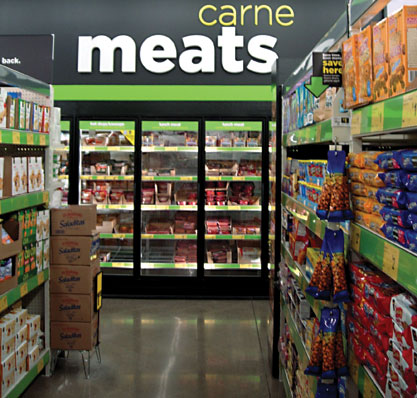
Dollar General Markets are small grocery stores of 15,000 to 17,000 square feet. The company has been testing the concept for more than five years, most recently taking the concept around Las Vegas and California. Dollar General operated 110 DG Market stores by the end of its fiscal year in February and has plans to open 20 new locations this year after opening 41 in 2012.
“We are definitely proving to ourselves that we can now sell produce and meat. I have personally said that I think produce and meat is the key to this,” Richard Dreiling, Dollar General’s chief executive officer, said during a conference call in June. “It’s still very much a work in progress … but we’re getting our margins up and we’re getting them to be a little more reliable.”
Ultimately, Dreiling said he sees DG Market as most successful in small markets that larger food retailers may eschew.
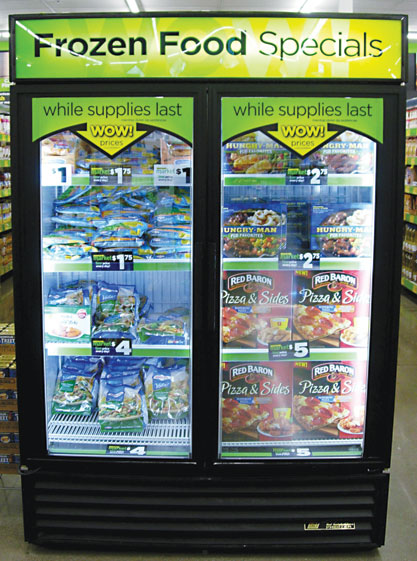
A larger version of Dollar General’s prototype stores, known internally as “DG Plus,” measure around 10,000 square feet, with the extra space devoted to more coolers and freezers and wider aisles. The company operated 124 of those stores by the end of the last fiscal year with plans to open 40 additional stores this year.
Scott Mushkin, an analyst with Wolfe Research, said he felt the company was less pleased with the results of these stores than with DG Market, particularly in California. Meredith Adler, an analyst for Barclays Capital, New York, said her impression was that Dollar General “doesn’t like the returns [on Dollar General Market] nearly as much as they like the returns on a regular Dollar General.”
For Dollar Tree, the Chesapeake, Va.-based single-price-point store, the alternative format known as Deal$ is allowing for strategic diversification and the opportunity to build in more places.
Dollar Tree acquired Deals from Supervalu in 2006 and has slowly recast it from a single-price-point operator in rural markets to a multiple-price-point discounter used primarily to penetrate urban markets. The company operated 200 Deals stores at the end of its first quarter in May. Bob Sasser, chief executive officer of Dollar Tree, said the company would not disclose how many Deals he felt the company could open, but said it represented a “significant” opportunity. “We believe it’s a strategically unbelievable opportunity for us to grow throughout the United States,” Sasser said at an investor conference.
Sasser said the Deals format allows Dollar Tree to leverage its infrastructure while going after more variety and value and higher volumes. Urban locations allow for denser, more underserved populations. The Deals stores also trade more heavily in consumables than Dollar Tree stores, Sasser said, selling around 60% consumables vs. Dollar Tree’s 51%.
| Suggested Categories | More from Supermarketnews |
 |
|

|
|

